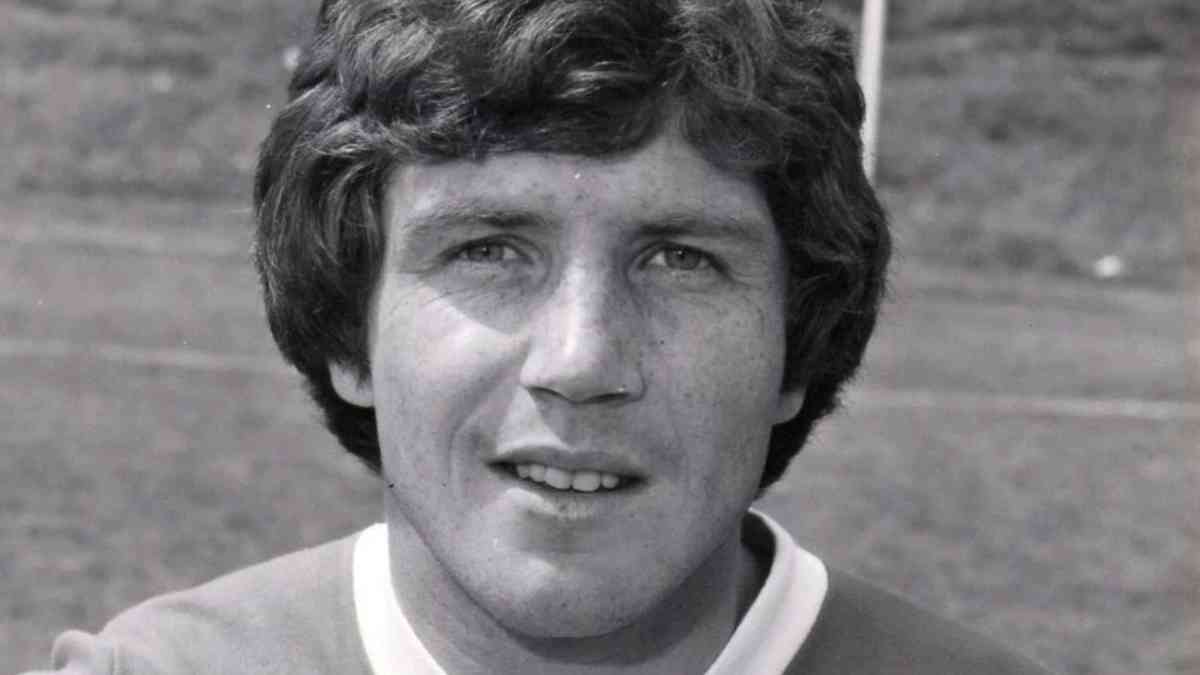Ronnie Glavin: The Midfield Maestro Who Conquered Celtic and Barnsley

Ronnie Glavin is a name that echoes with pride and admiration among fans of Scottish and English football. A gifted midfielder known for his pinpoint passing, thunderous shooting, and instinctive flair for the game, Glavin’s career took him from the heart of Glasgow to the adoration of Barnsley faithful. He wasn’t just a footballer; he was a performer, a match-winner, and a figure of inspiration who left a lasting impression wherever he played.
Born in the footballing cauldron of Glasgow, Glavin forged a career that would see him thrive in both the Scottish and English leagues, captivate fans with his performances, and later transition into a respected figure in football management.
Early Life and Footballing Roots
Ronald Michael Glavin was born on 27 March 1951 in Glasgow, a city that breathes football. Like many young boys in Scotland, he grew up playing in the streets, dreaming of one day donning the famous green and white hoops of Celtic or the navy blue of the national team. Glavin’s technical skills, work rate, and natural creativity were evident from a young age.
He began his professional journey at Partick Thistle, a club with a rich history of developing talent. Signing in 1968, Glavin quickly showed he was not just another young hopeful. His ability to dictate the tempo of the game, link defence and attack, and score goals made him an indispensable asset to the Jags. Over six seasons, he made 136 league appearances and scored 35 goals—an excellent return for a midfielder.
Making His Mark at Celtic
In 1974, Ronnie Glavin’s talents were recognised by one of Scotland’s biggest clubs—Celtic. The move, reportedly for a then-substantial fee of £80,000, signalled his arrival on the grand stage. At Celtic Park, Glavin entered a dressing room filled with stars and expectations. The club had enjoyed a golden era under legendary manager Jock Stein and was hungry for continued success.
It did not take long for Glavin to cement his place in the first team. He brought something special to the midfield—an aggression in attack combined with vision and creativity. His shooting was fierce and accurate, and he had the knack of being in the right place at the right time. In his five seasons with Celtic, Glavin made 101 league appearances and scored 35 goals.
His standout campaign came during the 1976–77 season when he delivered a string of influential performances. That year, Celtic clinched the Scottish League title and the Scottish Cup. Glavin’s name became a fan chant, particularly after a sensational hat-trick against Dundee United that remains one of the iconic performances of his Celtic career.
Despite his brilliance, the late 1970s were a period of transition for Celtic. Key players were moving on, and internal club dynamics were shifting. In 1979, Glavin decided to make a bold move south of the border to continue his career in England.
The Barnsley Legend is Born
Ronnie Glavin joined Barnsley in 1979 for a modest fee of around £50,000. It was a move that would etch his name into football folklore. At the time, Barnsley were a Third Division side with ambitions but limited expectations. Glavin, already approaching 30, could have used the move as a quiet descent into retirement—but he had other ideas.
What followed was an electrifying chapter in both the club’s and Glavin’s history. Over the next five years, he became the heartbeat of Barnsley, scoring goals with unmatched consistency and flair. Glavin’s ability to dictate games from midfield, deliver crucial goals, and inspire those around him helped the club earn promotion to the Second Division.
He netted an astonishing 73 goals in 176 league appearances during his first spell at the club. For a midfielder, such a strike rate was nothing short of phenomenal. It wasn’t just about numbers; it was about the style and impact. Glavin scored screamers from outside the box, coolly slotted penalties, and delivered last-minute winners. He was everywhere and everything for Barnsley during this golden era.
In recognition of his influence, Glavin was voted Barnsley’s “all-time cult hero” by fans in a BBC poll. To this day, his name is spoken with reverence by those who packed Oakwell Stadium in the early 1980s.
Brief International Recognition
It may surprise many that a player of Glavin’s calibre was capped only once for Scotland. On 27 April 1977, he made his debut in a friendly against Sweden. Scotland won 3–1, and although Glavin didn’t score, his technical prowess and midfield dynamism were evident.
However, the fierce competition for midfield spots—featuring the likes of Graeme Souness, Archie Gemmill, and Asa Hartford—meant that Glavin was never given an extended run in the national team. That single cap remains a peculiar footnote in an otherwise illustrious playing career.
Later Playing Years and Indoor Soccer
After his initial spell at Barnsley, Glavin enjoyed a brief stint with Portuguese club Belenenses, adding international flair to his career. He returned to Barnsley for a second spell in 1985–86 before moving into the lower leagues and even indoor football.
In 1986, he joined the St. Louis Steamers, an indoor soccer team in the United States. The move highlighted Glavin’s willingness to embrace new challenges and styles of play, and it extended his playing career while giving American audiences a glimpse of his class.
He later played for Stockport County and Cowdenbeath, demonstrating that even in the twilight of his career, he still had the love for the game and the energy to compete.
Transition to Management
Upon hanging up his boots, Glavin seamlessly transitioned into management and coaching. He took charge of several non-league clubs in England, including Frickley Athletic, Emley, Worksop Town, and Wakefield.
At Emley, he enjoyed notable success by guiding the team to the third round of the FA Cup during the 1997–98 season—a tremendous achievement for a club at that level. His knowledge of the game, man-management skills, and motivational presence made him a respected figure on the sidelines.
In later years, he was appointed Director of Youth Development at Wakefield, showing his commitment to nurturing young talent and giving back to the game that had given him so much.
Legacy and Recognition
Ronnie Glavin’s legacy is multi-dimensional. At Celtic, he is remembered as one of the most dynamic midfielders of the 1970s—a player who could both create and score. At Barnsley, he is revered as a true icon whose impact went beyond goals and trophies. His name still resonates with fans who watched him dominate the midfield and carry their club to glory.
Although his international recognition was limited, those who saw him play understood that Glavin possessed the quality and personality to rival the very best. He is regularly invited to club events and fan engagements and remains a beloved figure in footballing circles.
Barnsley Football Club inducted him into their Hall of Fame, and fans continue to celebrate his birthday and career milestones across social media. His story has also become a reference point for aspiring midfielders—proof that hard work, vision, and determination can lead to greatness even without constant headlines.
Conclusion
Ronnie Glavin’s football journey is one of determination, talent, and lasting influence. From the streets of Glasgow to the roar of Celtic Park, and from Barnsley’s rise to the Second Division to the dugouts of non-league management, Glavin has left his mark on every corner of football he touched.
He stands as a shining example of a complete midfielder—intelligent, brave, and blessed with an eye for goal. Though the modern football world often overlooks players from past generations, Ronnie Glavin’s story remains timeless. His passion for the game, commitment to his teams, and connection with the fans make him a true legend of British football.



